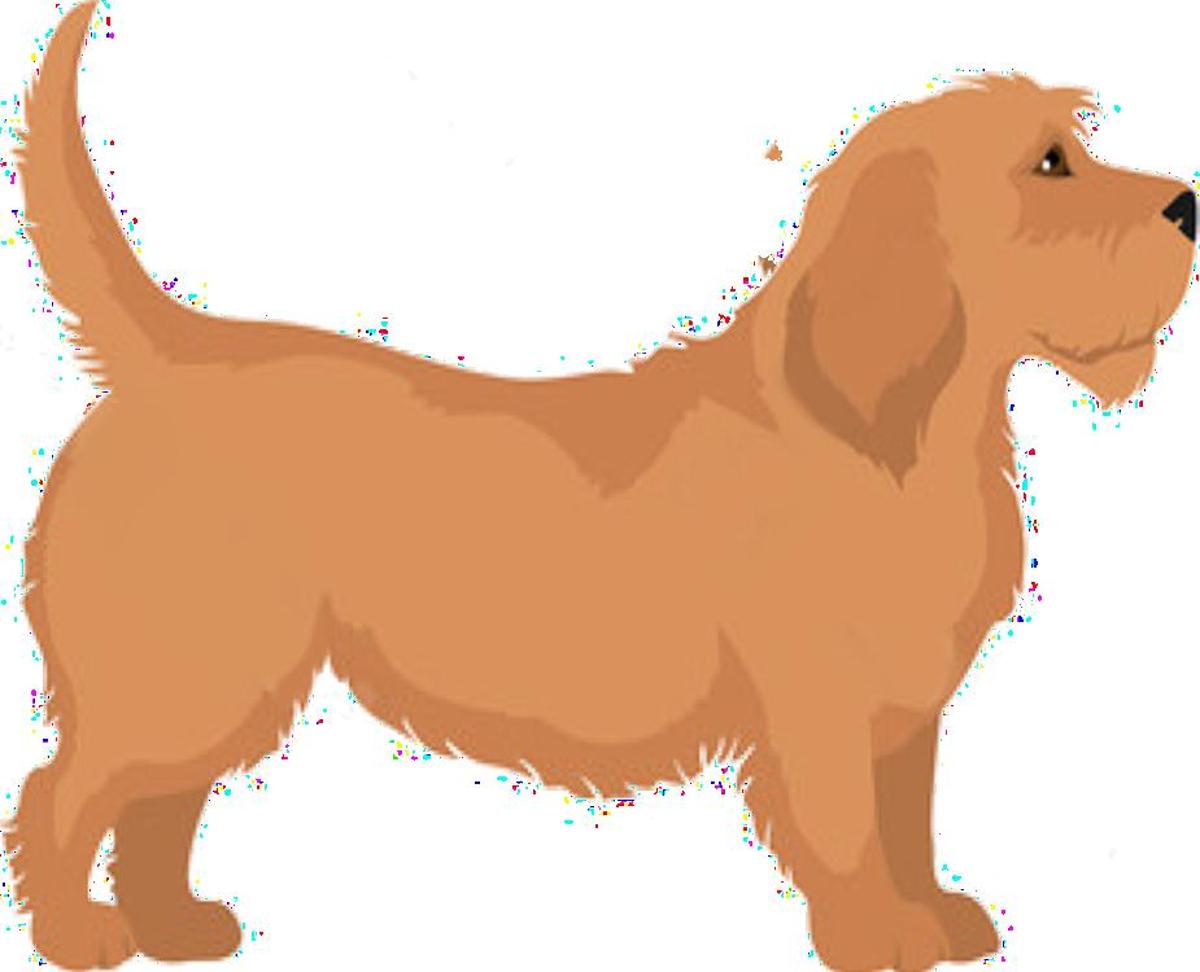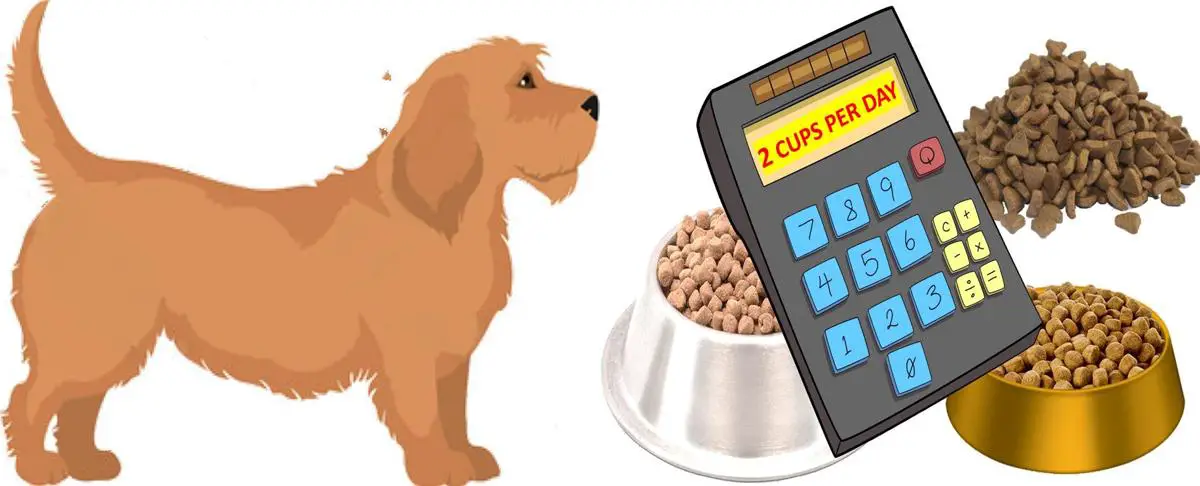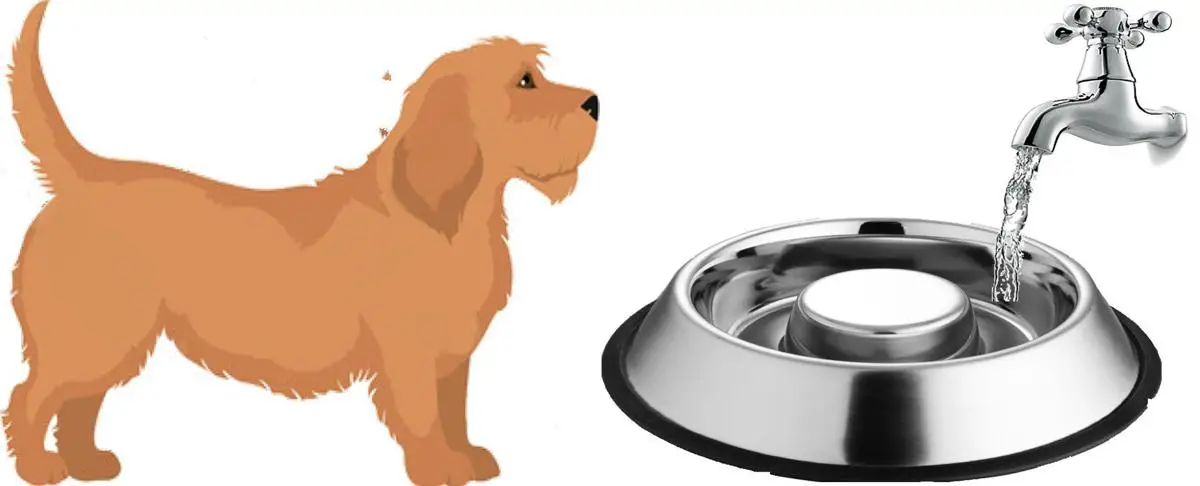Quick Links: Table of Contents
- Basset Fauve de Bretagne Breed Overview
- History of the Basset Fauve de Bretagne Breed. Where Basset Fauve de Bretagnes came from
- What the Basset Fauve de Bretagne Looks Like
- Best Basset Fauve de Bretagne Breeders
- Basset Fauve de Bretagne Growth
- What Colors do Basset Fauve de Bretagnes Have?
- Basset Fauve de Bretagne Litter Size
- How Fast Basset Fauve de Bretagnes Can Run
- Health Problems in Basset Fauve de Bretagnes and How to Prevent Them
- How to Take Care of Basset Fauve de Bretagne
- Dog Breeds That Are Similar to Basset Fauve de Bretagnes
- Other Things to Know About Basset Fauve de Bretagnes
Basset Fauve de Bretagne Breed Overview
The Basset Fauve de Bretagne is a small-sized dog.
The adult Basset Fauve de Bretagne stands 12 to 15 inches. .
The Basset Fauve de Bretagne belongs to the Hound Dogs group.
Dogs in the Hound Dogs group, like the Basset Fauve de Bretagne, were bred to pursue and hunt warm-blooded animals. Hounds hunt by using their good sight or their good sense of smell. Dogs that belong to the Hound Group have strong prey drives and often will stop at nothing to catch what they are pursuing.
The fact that Basset Fauve de Bretagnes belong to the Hound Dogs group is one of the reasons why Basset Fauve de Bretagnes have the personality and temperament that they have.
The temperament of the Basset Fauve de Bretagne is generally described as:
- Adaptable
- Affectionate
- Companionable
- Courageous
- Sociable
- Stubborn
History of the Basset Fauve de Bretagne Breed. Where Basset Fauve de Bretagnes came from
The French breed known as the Basset Fauve de Bretagne is a hound.
His ancestry dates back to the 1500s.
Francois I usually hunted with a pack of hounds.
According to legend, these dogs are Breton hounds that are connected to the Grand Basset Fauve de Bretagne.
From the Grand Basset Fauve de Bretagne, the Basset Fauve de Bretagne descended.
The Grand Basset Fauve de Bretagne went extinct, but the Basset Fauve de Bretagne and rough-coated Griffons and Bassets carry on their genetic composition.
Admiral d`Anneboulde presented the Basset Fauve de Bretagne to the French court in 1520.
Mirraud was the name of a Basset Fauve de Bretagne stud.
The Basset Fauve de Bretagne was restricted to the French aristocracy until the French Revolution.
The Basset Fauve de Bretagne was open for ownership in 1789.
Since most peasants did not own horses, the breed started to re-evolve into a shorter-legged dog that was no longer required to hunt with horses.
.
What the Basset Fauve de Bretagne Looks Like
One of the tiniest hounds from France is the Basset Fauve de Bretagne.
He has a long body and short legs, which is the traditional basset body shape.
He looks curious and has dark eyes.
He can have a dark brown or black nose.
He has short, not overly long ears that dangle low.
His ears should just touch the tip of his nose when pulled forward.
He should never have his medium-length tail clipped or bobbed.
He has a wire-like, medium-length coat that is harsh.
To the touch, his coat seems dense and rough.
He does have an undercoat that is a little softer.
Fawn, red wheaten, and wheaten are the three colors for the Basset Fauve de Bretagne.
.
Best Basset Fauve de Bretagne Breeders
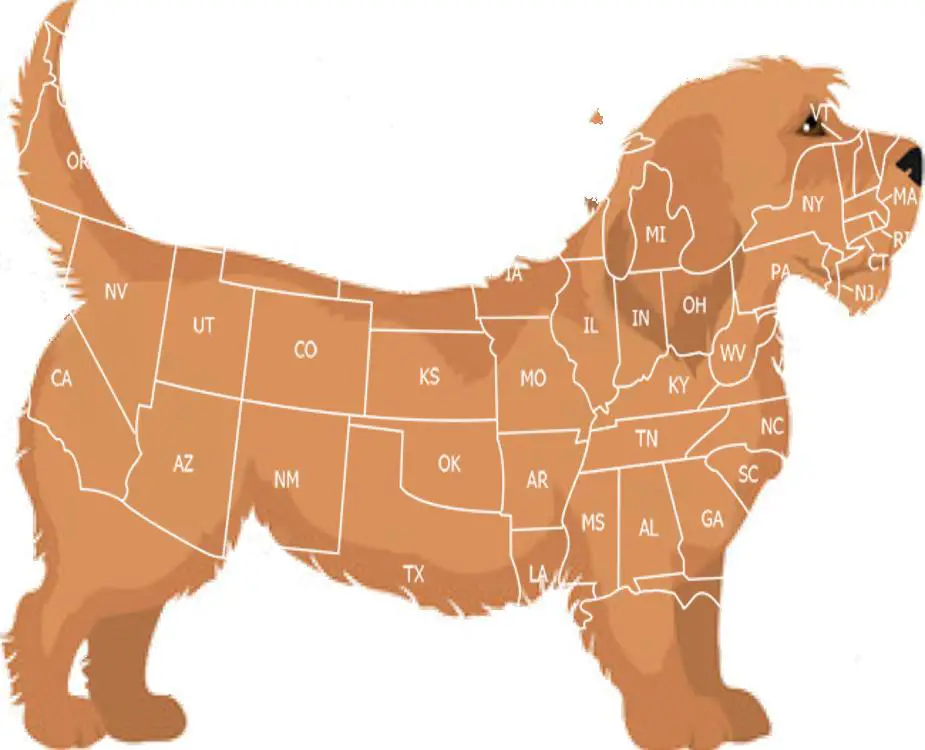
We have researched reputable Basset Fauve de Bretagne breeders that you can buy a puppy.
Go to this page for our complete list of reputable Basset Fauve de Bretagne breeders in various states in the United States.
On this page, you will see how much these breeders sell their puppies for, and how many puppies they have available.
A few of these breeders are listed below.
-
4Clovers Basset Fauve de Bretagne
Puppy Price: $3500
Basset Fauve de Bretagne Growth
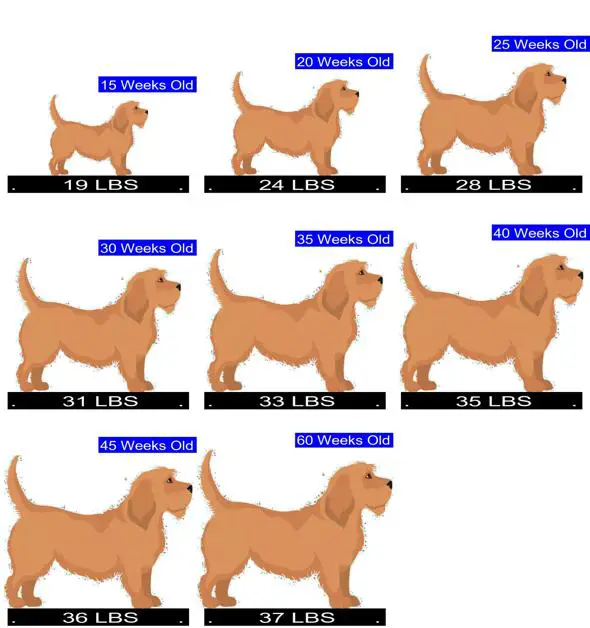
New Basset Fauve de Bretagne owners need to know about the growth of their Basset Fauve de Bretagnes. This will help them plan their living spaces accordingly.
Also, knowing the typical growth pattern of the Basset Fauve de Bretagne will help new owners catch the abnormal growth of their Basset Fauve de Bretagne early.
See our calculator for predicting how big your Basset Fauve de Bretagne puppy will get. You will also learn about the typical weight of the Basset Fauve de Bretagne at different ages and how to catch abnormal growth in your Basset Fauve de Bretagne
What Colors do Basset Fauve de Bretagnes Have?
Basset Fauve de Bretagnes come in the following beautiful primary colors:
Basset Fauve de Bretagnes come in the following lovely secondary colors in addition to their primary colors:
Basset Fauve de Bretagne Litter Size
Researchers from the Norwegian School of Veterinary Science did a study where they counted the numbers of puppies in 9 different Basset Fauve de Bretagne birth litters.
From this study, the researchers found that the average number of puppies that Basset Fauve de Bretagnes can have is 5 puppies. Also, the Basset Fauve de Bretagne can have as few as 1 puppies per litter and as many as 8 puppies per litter.
The number of puppies that the Basset Fauve de Bretagne will have depends on factors such as the age of the Basset Fauve de Bretagne, the method of pregnancy, etc.
Click here to see our calculator for predicting how many puppies your Basset Fauve de Bretagne will have and how the litter size of the Basset Fauve de Bretagne compares to the litter size of other dog breeds.
How Fast Basset Fauve de Bretagnes Can Run
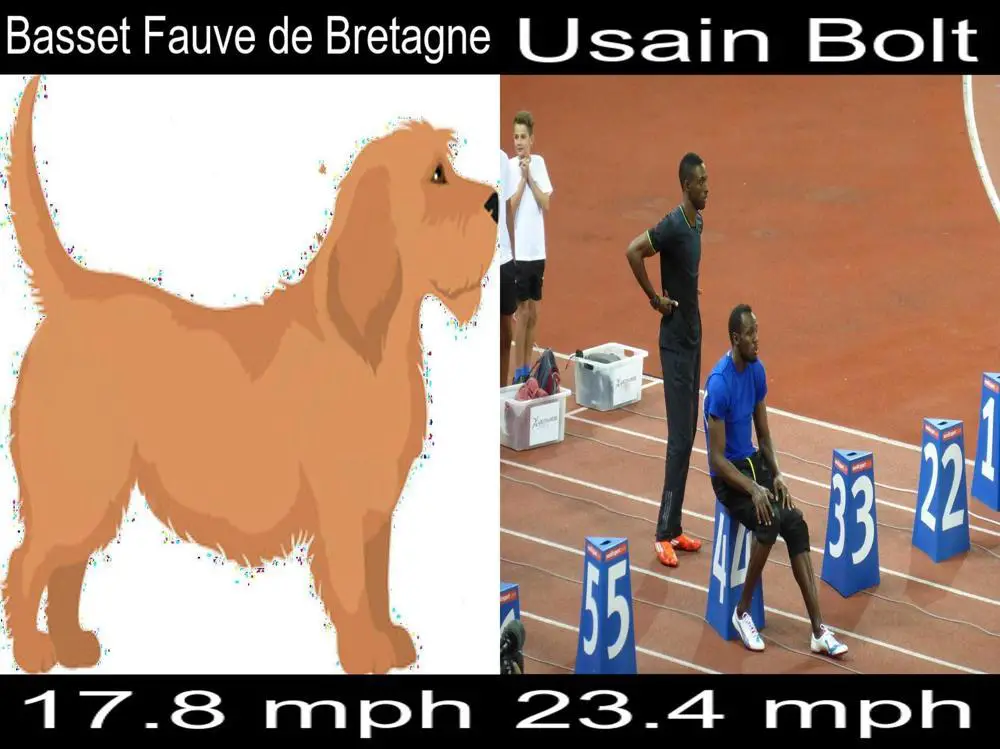
How fast a dog breed can run is a good measure of how athletic the dog breed is.
The American Kennel Club (AKC) regularly conducts dog running competitions. The AKC records the running speed of competing dogs in these competitions. These competitions are open to all dog breeds.
Based on our analysis of the speeds of 3 different Basset Fauve de Bretagnes, the average speed of the Basset Fauve de Bretagne is 17.8 mph (28.6 kmph).
The fastest speed on AKC record that the Basset Fauve de Bretagne ran in a race is 18.75 mph (30.2 kmph) and the minimum speed on record in a race for a Basset Fauve de Bretagne is 16.15 mph (26.0 kmph).
Click here to see how the speed of the Basset Fauve de Bretagne compares to the speed of other dogs and other mammals such as cats, horses, humans, etc.

Health Problems in Basset Fauve de Bretagnes and How to Prevent Them
Every dog breed has its own set of health problems that it tends to develop. There is nothing like a perfect dog breed.
The Basset Fauve de Bretagne is prone to certain genetic health conditions. The Orthopedic Foundation for Animals (OFA) is an organization that keeps track of genetic health problems in dog breeds.
From the extensive records that the OFA keeps, the OFA knows what health problems each dog breed is naturally prone to develop.
Hence, the OFA recommends which health screening breeders should perform on a dog breed to make sure that the breeders won`t breed `defective` dog parents that can pass down defective genes to their puppy offspring.
If you want a Basset Fauve de Bretagne puppy that will grow up to be healthy, make sure that your Basset Fauve de Bretagne breeder screens your puppy or your puppy`s parents for the health problems that the OFA recommends for your puppy`s breed. This will increase the chances that your puppy is free from genetic defects.
The following are the health tests that Orthopedic Foundation for Animals (OFA) recommends that breeders should screen Basset Fauve de Bretagnes for:
You can find out more about OFA`s recommended tests for Basset Fauve de Bretagnes here.
How to Take Care of Basset Fauve de Bretagne
To take good care of your Basset Fauve de Bretagne, you need to make sure that you groom your Basset Fauve de Bretagne regularly.
Secondly, you need to find a veterinarian in your area that will routinely check the health status of your Basset Fauve de Bretagne regularly, and give you appropriate recommendations on your Basset Fauve de Bretagne`s preventative care.
Thirdly, you need to commit some time to exercise your Basset Fauve de Bretagne daily. Regular exercise helps improve the health and quality of life of your Basset Fauve de Bretagne.
Also, you need to feed your Basset Fauve de Bretagne high-quality dog food, and the food should be of the right amount to prevent your Basset Fauve de Bretagne from getting overweight or underweight.
See our recommendations on what to feed the Basset Fauve de Bretagne and how much food to feed the Basset Fauve de Bretagne at different life stages.
Finally, you need to make sure that your Basset Fauve de Bretagne has access to clean water all the time. See our recommendations on how much water your Basset Fauve de Bretagne needs to drink at different ages.
Dog Breeds That Are Similar to Basset Fauve de Bretagnes
If you have not made up your mind on which dog breed to get, you may also want to consider some other dogs similar to the Basset Fauve de Bretagne.
We crunched the numbers and found that the following dog breeds that have similar behavior and temperament as the Basset Fauve de Bretagne:
- Bergamasco Sheepdog (77 percent match with Basset Fauve de Bretagne). Learn more about the Bergamasco Sheepdog here.
- Biewer Terrier (75 percent match with Basset Fauve de Bretagne). Learn more about the Biewer Terrier here.
- Cockalier (79 percent match with Basset Fauve de Bretagne). Learn more about the Cockalier here.
- French Spaniel (77 percent match with Basset Fauve de Bretagne). Learn more about the French Spaniel here.
Other Things to Know About Basset Fauve de Bretagnes
Here are some of the very important characteristics of the Basset Fauve de Bretagne that you need to know about the Basset Fauve de Bretagne breed:
